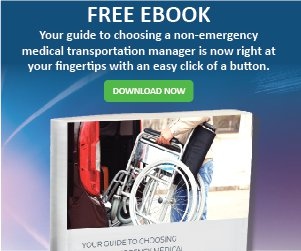
Regardless of the location or size of a medical facility, patient flow continues to be a thorn in the side of administrators and caregivers alike. Patient flow is a complicated issue, with a number of factors converging to cause major headaches for hospital staff and patients, leading to ballooning wait times.
Improving patient flow is about more than efficiency - it's about giving patients the best treatment possible. That creates better health outcomes, which means happier Medicare members who are less likely to switch plans.
Because patient care is so complex, there are a lot of different ways to approach it. While patient admission receives the lion's share of administrator attention — overcrowded Emergency Departments tend to do that — one of the most important aspects is the discharge process. Discharge delays can wreak havoc on patient flow, causing significant delays. However, better non-emergency medical transportation solutions could help alleviate these issues and improve patient flow.
Inefficient discharge processes lead to delays
Discharge delays aren't just annoying for patients— they create patient flow problems that extend far beyond the next patient waiting for an inpatient bed. When one person can't be discharged in a timely fashion, it causes a domino effect. That room or bed can't be used until they have left, and in the meantime, more patients are arriving at the facility. Under that intense pressure and stress, they may not make the best use of all available resources, further exacerbating the problem.
When doctor's offices, hospitals and other treatment centers are inundated with more patients than can reasonably be treated in a short amount of time, quality of care is likely to drop. The priority becomes seeing patients as quickly as possible and working through the backlog so staff members can get back to a normal cadence. How can people be assured that providers will give them their full attention when those caregivers are busy just trying to keep their heads above water? Everyone involved needs some relief.
Addressing patient flow with NEMT
Medical administrators have approached the patient flow problem from a number of different angles. Some facilities have gotten pretty creative with their solutions, embracing outside-the-box ideas to streamline discharge processes. In Washington, D.C., for instance, staff at the Medstar Washington Hospital Center have supplied patients with required medication at the point of discharge. Rather than have patients make a separate trip to a pharmacy, physicians give them everything they need upfront. That reduces the likelihood of a discharged individual neglecting to pick up their medication, treat their ailment at home and require readmission at a later date.
Another major issue that impacts the discharge process is medical transportation. For many patients, getting to and from their medical appointments can be difficult. They may not own a car or be legally allowed to drive. Public transportation options could be meager, if they are available at all. Even those who can take public transportation may be unwilling to wait in the cold or rain, especially after an uncomfortable or painful treatment session.
Non-emergency medical transportation solutions can help shuttle patients to and from their important appointments, but they need to be reliable. Relying on a family member or caretaker for rides can be problematic if any unforeseen problem arises. No matter how well-meaning they are, sometimes life gets in the way of things. They could get held up at work and wind up staying late, unable to come pick the patient up for several hours. Of course, there are plenty of beneficiaries who don’t have family or friends around to give them a ride, and they will have even more trouble getting back home after an appointment.
High-quality NEMT services are a huge boon for patients, hospitals and managed care organizations (MCOs). Patients enjoy the convenience of safe reliable and punctual transportation. Hospitals are able to improve their discharge flow, as well as coordinate their own scheduling with NEMT itineraries. MCOs and Medicare organizations can benefit from the improved member experience that great NEMT solutions provide, reducing churn rates and boosting their profitability.
Are you interested in learning more about how LogistiCare l Circulation can help your organization improve patient flow? Request a demo



